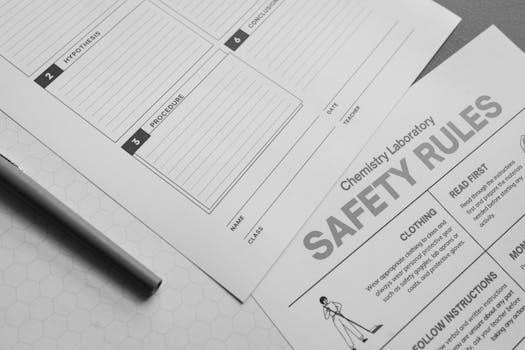find someone who worksheet pdf

Find Someone Who Worksheet PDF⁚ A Comprehensive Guide
This comprehensive guide explores “Find Someone Who” worksheets, a dynamic educational tool. These worksheets encourage student interaction and skill development across various subjects. Discover their benefits and practical applications.
“Find Someone Who” activities are engaging and interactive exercises often utilized in educational settings. These activities typically involve a worksheet containing a list of prompts or questions. Students circulate the classroom, finding classmates who match the criteria described in each prompt. It’s a fantastic method for practicing English skills, especially question formation and present simple usage, as highlighted by educators online.
Beyond language learning, “Find Someone Who” serves as an excellent icebreaker, encouraging students to connect and learn about each other. The activity promotes communication, active listening, and social interaction. Worksheets can be adapted for various age groups and skill levels, making them versatile tools for teachers. Some variations even incorporate bingo formats for added fun and engagement. The core principle remains consistent⁚ fostering interaction and knowledge sharing among participants.

Understanding the Core Concept
At its heart, the “Find Someone Who” concept revolves around interactive learning. It promotes student engagement through communication and information gathering. The activity’s adaptable nature makes it broadly applicable.
What is a “Find Someone Who” Worksheet?
A “Find Someone Who” worksheet is a structured activity designed to encourage students to interact with one another to gather information. Typically, the worksheet contains a series of prompts or questions, and students must find classmates who fit the criteria described in each prompt. For example, a prompt might read, “Find someone who has a birthday in December” or “Find someone who likes to read science fiction.”
The core purpose is to facilitate communication and practice question-and-answer skills. Students move around the classroom, asking questions, listening to responses, and recording the names of classmates who match the prompts. This activity transforms learning into an engaging, social experience. The worksheet serves as a framework for structured interaction, promoting active participation and building a sense of community within the classroom.
Benefits of Using “Find Someone Who” in Education
“Find Someone Who” worksheets offer numerous benefits in educational settings. Primarily, they foster active learning by requiring students to engage directly with their peers. This active participation enhances retention and understanding compared to passive learning methods. The activity also cultivates essential communication skills, such as asking clear questions, actively listening to responses, and summarizing information accurately.
Furthermore, these worksheets promote social interaction and collaboration among students. They encourage students to step outside their comfort zones, interact with diverse classmates, and build a sense of community. “Find Someone Who” activities can also serve as effective icebreakers, creating a relaxed and engaging atmosphere at the start of a lesson or school year. They provide a fun, low-pressure way for students to learn about one another, fostering friendships and a positive classroom environment.

Designing Effective Worksheets
Creating impactful “Find Someone Who” worksheets involves careful question selection and tailoring to the target audience. Thoughtful design maximizes engagement and learning outcomes for diverse age groups and skill levels.
Choosing Appropriate Questions
Selecting the right questions is paramount when designing a “Find Someone Who” worksheet. Questions should align with learning objectives, promoting both interaction and knowledge acquisition. Consider the students’ existing knowledge base and language proficiency. Employing present simple questions is a great option.
Questions should be clear, concise, and easily understandable. Avoid ambiguity or complex phrasing that could hinder communication. The aim is to facilitate smooth interaction and information gathering, allowing students to confidently approach their peers.
Incorporate a mix of question types to cater to different learning styles and encourage varied responses. Include questions that elicit personal preferences, past experiences, or factual knowledge. This variety keeps the activity engaging and caters to diverse interests within the classroom.
Remember to review and refine your questions, ensuring relevance and appropriateness.
Tailoring to Different Age Groups and Skill Levels
Adapting “Find Someone Who” worksheets to suit diverse age groups and skill levels is essential for maximizing their effectiveness. For younger learners, focus on simpler questions with familiar vocabulary. Use visual aids and larger font sizes to enhance accessibility and engagement.
For older students, incorporate more complex questions that encourage critical thinking and deeper analysis. Introduce subject-specific vocabulary and concepts to reinforce learning within particular disciplines.
Consider varying the question format to challenge students with different learning styles. Include open-ended questions that promote discussion and encourage personalized responses. Offer sentence starters or prompts to support students who may struggle with formulating their own questions.
Remember to provide clear instructions and examples to ensure all students understand the task. By carefully tailoring the worksheets, you can create an inclusive and engaging learning experience.
Utilizing “Find Someone Who” in the Classroom
“Find Someone Who” activities are versatile classroom tools. They foster interaction, practice question formation, and serve as engaging warm-ups. Implement them to enhance student engagement and learning.
Present Simple Practice and Question Formation
“Find Someone Who” worksheets are excellent for reinforcing Present Simple tense and question formation. These activities provide a practical context for students to practice asking and answering questions about habits, routines, and general truths. The format naturally encourages students to use question structures like “Do you…?”, “Does he/she…?”, and short answers such as “Yes, I do” or “No, she doesn’t”.
Worksheets often include prompts like “Find someone who has a birthday in December,” prompting students to ask, “Do you have a birthday in December?” This active engagement solidifies their understanding of grammatical structures. By interacting with peers, students gain confidence in their ability to formulate questions and respond accurately, making the learning process both effective and enjoyable. These activities can also be adapted to focus on specific vocabulary sets or thematic units, further enhancing their versatility in the classroom.
Icebreaker and Warm-up Activities
“Find Someone Who” worksheets shine as icebreakers and warm-up activities. They quickly engage students, encouraging interaction and creating a positive classroom atmosphere. These worksheets provide a structured way for students to learn about each other, fostering a sense of community. Prompts can be lighthearted and fun, such as “Find someone who likes pizza” or “Find someone who has a pet.”
The activity promotes active listening and speaking skills from the start of a lesson. It can alleviate anxiety and encourage shy students to participate. By moving around and interacting, students become more comfortable and receptive to learning. These activities are easily adaptable to fit different age groups and subject matters, making them a versatile tool for educators looking to kickstart their lessons with energy and enthusiasm. The inherent social aspect also helps build rapport among students, creating a more collaborative learning environment.

Finding and Creating Worksheets
Discover readily available “Find Someone Who” worksheets online as printable PDFs. Alternatively, learn how to design your own custom worksheets, tailored to specific learning objectives and student needs.
Online Resources for Printable PDFs
Numerous online platforms offer printable “Find Someone Who” PDF worksheets, catering to diverse subjects and age groups. Liveworksheets provides interactive options, while other educational websites host collections designed by teachers. These resources frequently cover topics from present simple practice to general icebreaker activities, incorporating varying levels of difficulty.
Consider exploring sites dedicated to ESL/EFL resources, as “Find Someone Who” is a staple activity for language learners. Many of these sites offer free or low-cost downloadable PDFs, often with answer keys or teacher’s notes.
Before using, carefully preview to ensure alignment with curriculum goals. Rate lessons after use.
Creating Your Own Custom Worksheets
Designing your own “Find Someone Who” worksheets allows for tailored content that perfectly aligns with your curriculum and students’ needs. Start by identifying the specific learning objectives you want to achieve. Next, brainstorm questions that encourage interaction and information gathering related to those objectives.
Consider your students’ age, skill level, and interests. Use clear and concise language, avoiding ambiguity. Incorporate visual elements like images or clip art to enhance engagement.
For language learning, focus on target vocabulary and grammar structures. For other subjects, frame questions around key concepts and facts. Tools like Google Docs or Canva simplify worksheet creation. Remember to proofread carefully before printing.

Variations and Extensions
Explore creative ways to adapt “Find Someone Who” activities. From bingo formats to topic-specific modifications, discover how to keep students engaged and reinforce learning in diverse and exciting ways.
“Find Someone Who” Bingo
Transform the classic “Find Someone Who” activity into an engaging game of Bingo! Create bingo cards with prompts like “Find someone who has a birthday in December” or “Find someone who likes pizza.” Students circulate, completing the tasks and marking their cards.
“Find Someone Who” Bingo enhances interaction and makes learning fun. The bingo format adds an element of competition and excitement. It also encourages students to engage with a wider range of classmates. Adapt the prompts to suit your lesson’s objectives and vocabulary. This variation works well as an icebreaker or a review activity. It is especially useful in larger classes, ensuring everyone participates. The bingo format also promotes active listening and question-asking skills. Consider awarding small prizes to the winners for added motivation. “Find Someone Who” Bingo is a versatile and enjoyable way to reinforce learning!
Adapting for Specific Topics and Vocabulary
The beauty of “Find Someone Who” lies in its adaptability. Tailor the worksheet to reinforce specific topics and vocabulary. For a science lesson, prompts could include “Find someone who knows what photosynthesis is” or “Find someone who can name three planets.”
In language classes, focus on vocabulary acquisition. Use prompts like “Find someone who knows the word for ‘library’ in French” or “Find someone who can use ‘ubiquitous’ in a sentence.” For history, try “Find someone who knows when World War II ended” or “Find someone who can name a famous Roman emperor.” By aligning the prompts with your curriculum, you can transform a simple icebreaker into a powerful learning tool. This method not only reinforces knowledge but also encourages students to actively use new vocabulary in a meaningful context. Remember to choose vocabulary that is appropriate for the students’ level.




